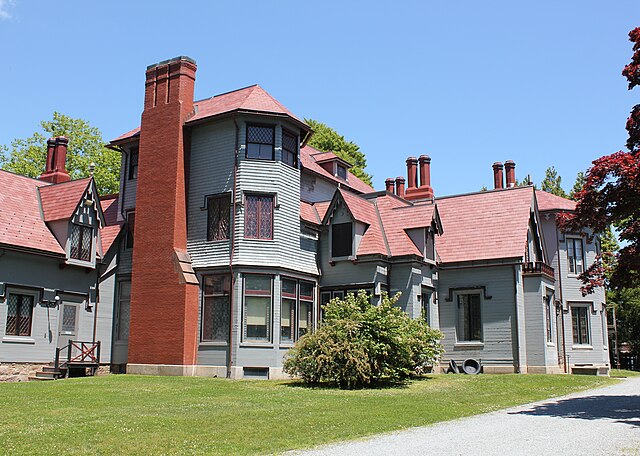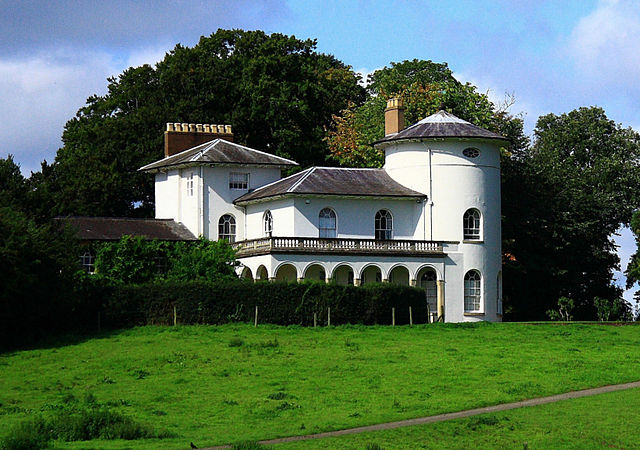Richard Upjohn was a British architect who emigrated to the United States and became most famous for his Gothic Revival churches. He was partially responsible for launching the movement to popularity in the United States. Upjohn also did extensive work in and helped to popularize the Italianate style. He was a founder and the first president of the American Institute of Architects. His son, Richard Michell Upjohn, (1828-1903), was also a well-known architect and served as a partner in his continued architectural firm in New York.
William Rotch Jr. House, New Bedford, MA, (1834)
Kingscote, Newport, RI, (1839)
Bowdoin College Chapel, Brunswick, ME, (1844-1855)
Church of the Holy Cross, Middletown, RI, (1844)
The Italianate style was a distinct 19th-century phase in the history of Classical architecture. Like Palladianism and Neoclassicism, the Italianate style combined its inspiration from the models and architectural vocabulary of 16th-century Italian Renaissance architecture with picturesque aesthetics. The resulting style of architecture was essentially of its own time. "The backward look transforms its object," Siegfried Giedion wrote of historicist architectural styles; "every spectator at every period—at every moment, indeed—inevitably transforms the past according to his own nature."
Osborne House on the Isle of Wight, England, built between 1845 and 1851. It exhibits three typical Italianate features: a prominently bracketed cornice, towers based on Italian campanili and belvederes, and adjoining arched windows.
Cronkhill, designed by John Nash, the earliest Italianate villa in England
Villa Emo by Palladio, 1559. The great Italian villas were often a starting point for the buildings of the 19th-century Italianate style.
Cliveden: Charles Barry's Italianate, Neo-Renaissance mansion with "confident allusions to the wealth of Italian merchant princes."








